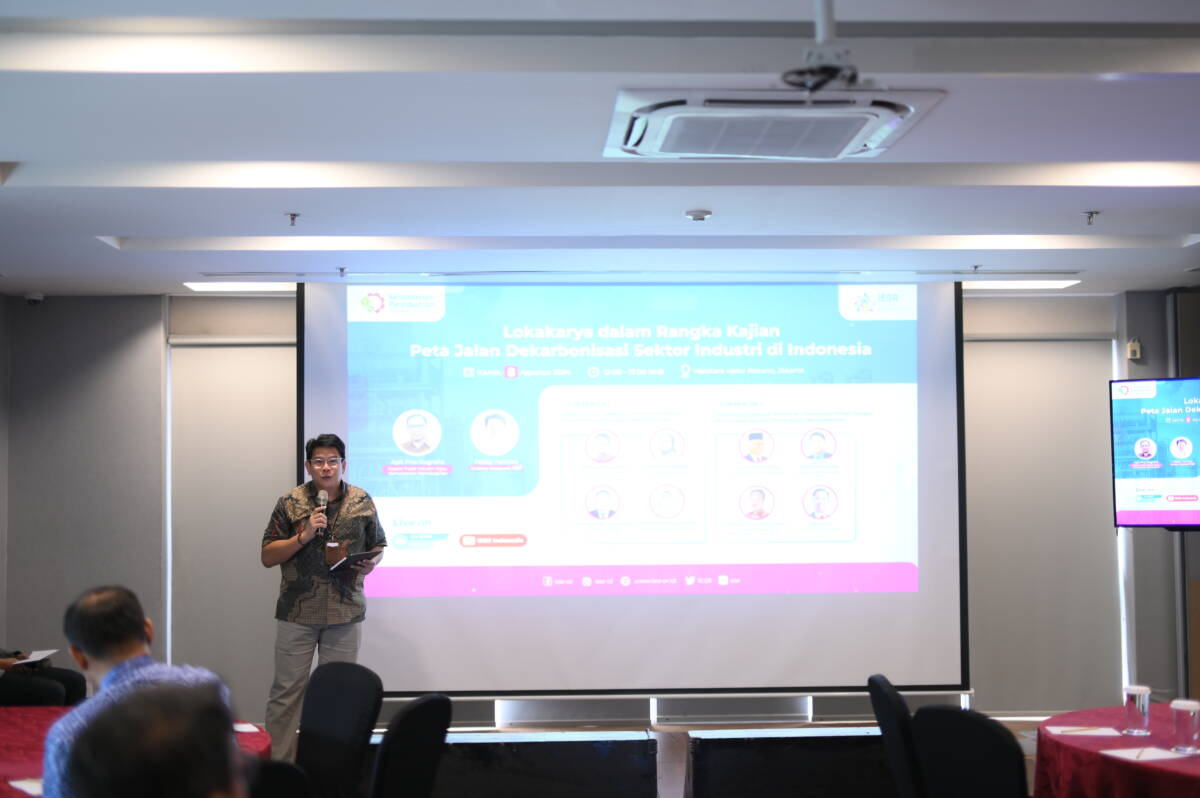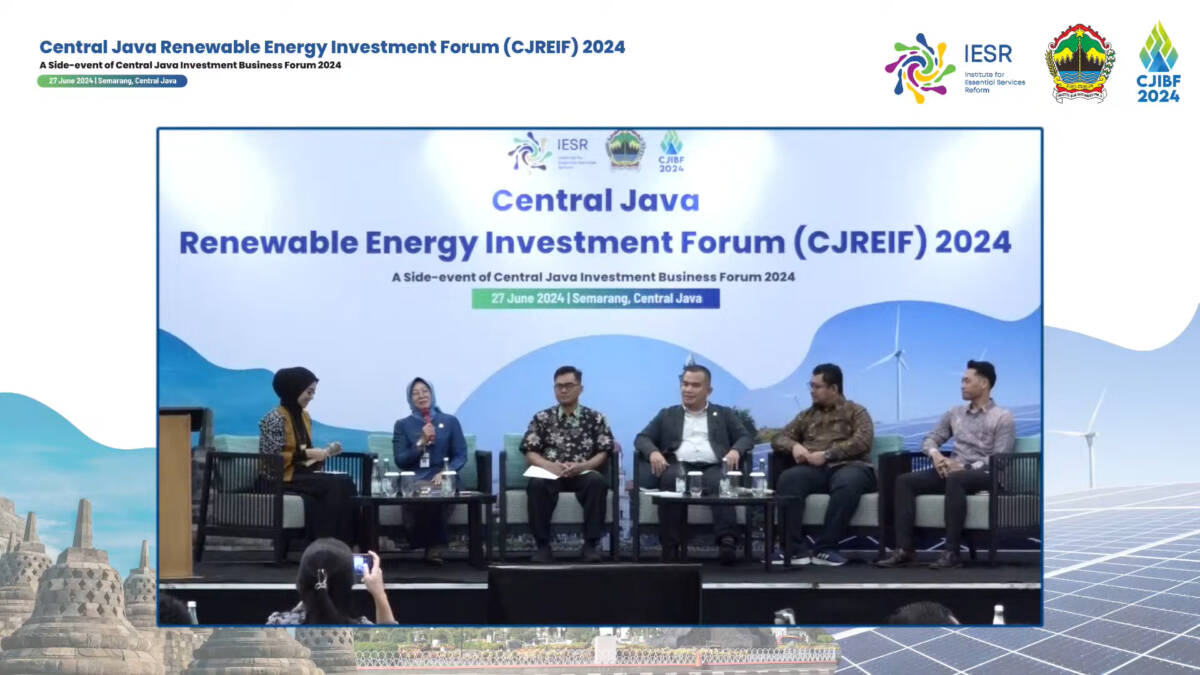
Indonesia Solar Summit 2024: Strengthening the Local Solar Industry Supply Chain
Jakarta, August 13, 2024 – Solar energy adoption worldwide is increasing, reaching up to 1.6 TW by 2023. In Southeast Asia, the total solar energy capacit... Read more.

Efforts to Increase Industrial Competitiveness through Industrial Decarbonization Action
Jakarta, August 8, 2024 – Industrial sector emissions in Indonesia continued to increase in 2011-2022. In 2022, industrial sector emissions reached more t... Read more.

Learning from Shanxi in Embarking on Energy Transition
Wira A. Swadana, Green Economy Program Manager of IESR, signed a Memorandum of Understanding (MoU) to promote low-carbon energy development and collaboration in... Read more.

Youth Climate Conference 2024: Young People Voice the Urgency of a Just Energy Transition
Jakarta, July 29, 2024 – The Institute for Essential Services Reform (IESR), together with the Clean, Affordable and Secure Energy (CASE) for Southeast As... Read more.

Formulating Clarity of Definitions and Indicators of an Just Transition in Indonesia
Jakarta, July 25, 2024—The shift from fossil energy to renewable energy, or energy transition, will affect people’s lives in Indonesia. To mitigate the ... Read more.

Strengthening the Concept and Implementation of Just Transition in National and Regional Planning in Indonesia
Jakarta, July 16, 2024—Indonesia, through the Ministry of National Development Planning (Ministry of PPN/Bappenas), has included energy transition in the Nati... Read more.

Power Wheeling Necessary to Accelerate Renewable Energy Utilization
Jakarta, July 10, 2024 – The Institute for Essential Services Reform (IESR) believes that regulating the power wheeling scheme in the New and Renewable En... Read more.

Transitioning Fossil Fuel Businesses to Lower Emissions
Jakarta, July 4, 2024 – Indonesia government needs to accelerate the energy transition by shifting from reliance on emission-intensive fossil fuels to ren... Read more.

Opportunity to Achieve Renewable Energy Mix Target through Energy Policy Update and Industrial Decarbonization
Jakarta, July 3, 2024- To limit the rise of the earth’s temperature that causes a climate crisis, Indonesia needs to accelerate using renewable energy as ... Read more.

Attracting Investment in the Renewable Energy Sector in Central Java
Semarang, June 27, 2024 – The Central Java Provincial Government is actively seeking to attract more investment in the renewable energy sector, in line with t... Read more.

